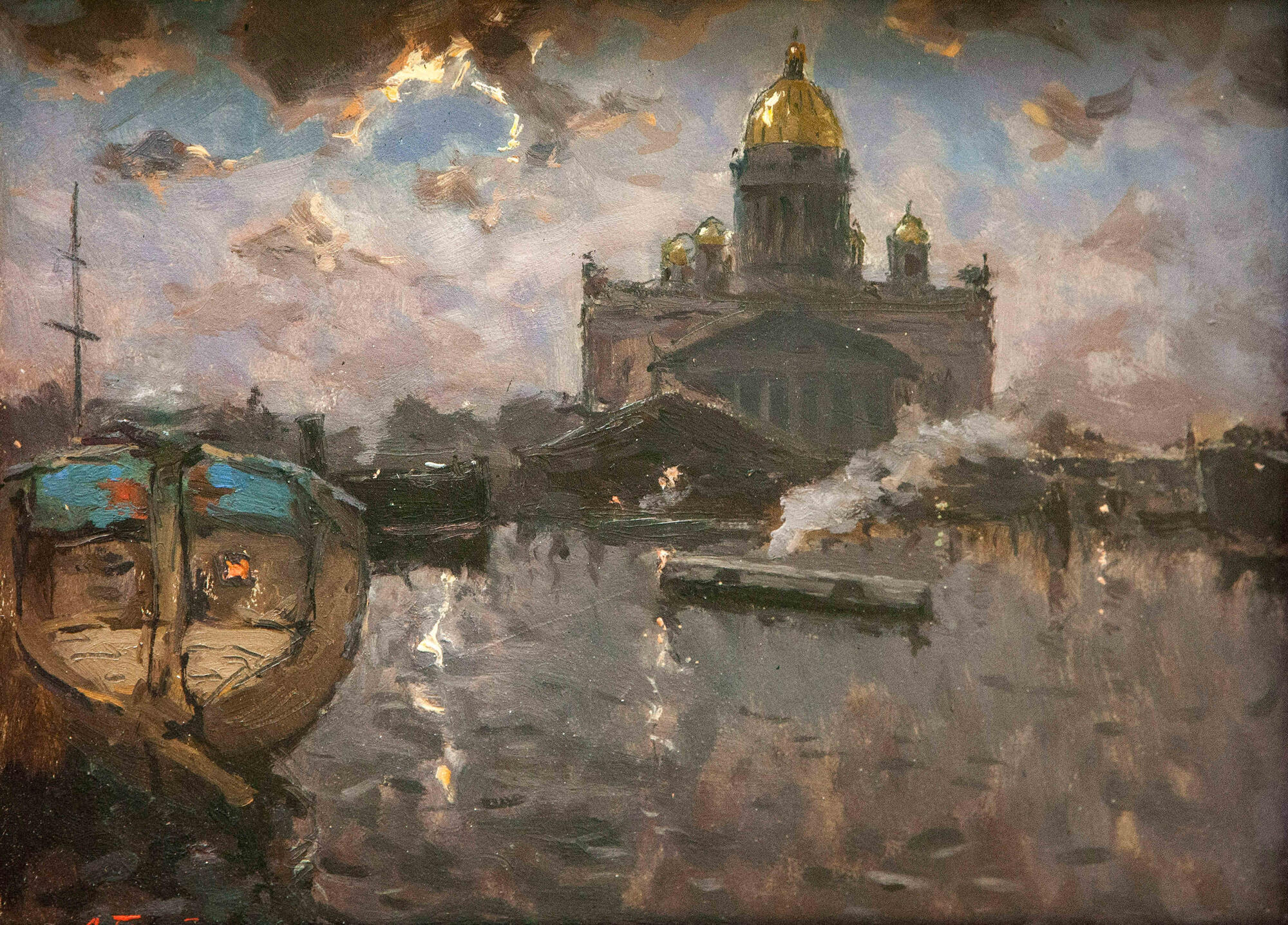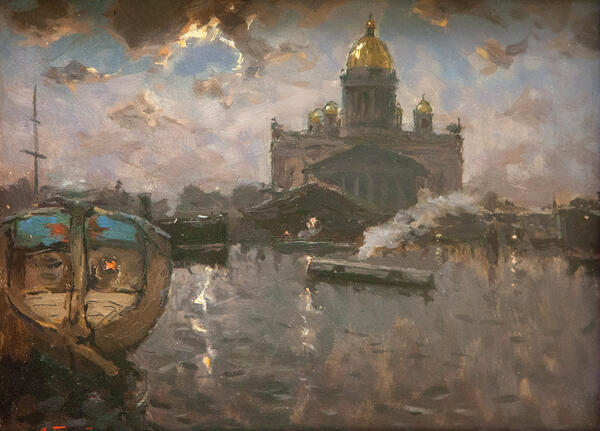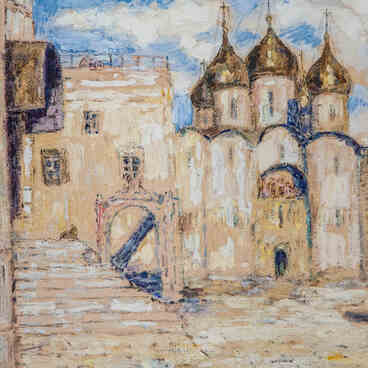The Nikolai Golovanov Apartment Museum houses one of the works of the artist Alexander Fyodorovich Bely entitled “Neva. Moonlight Night”.
Alexander Bely studied at the Odessa Art School and the Academy of Arts. In 1900, he went on a trip to France. After his trip, Bely developed an interest in Impressionism. For many years, he participated in exhibitions of the Academy of Arts and the Association of Painters. He was also a member of the Society of Artists named after Arkhip Kuindzhi and the Association of Artists of Revolutionary Russia. Bely exhibited his works at the First State Free Exhibition of Works of Art in Petrograd (1919) and the Anniversary Exhibition of Fine Arts (1927). Since 1902, Alexander Bely worked as a teacher at the Drawing School of the Imperial Society for the Encouragement of Arts in Saint Petersburg, as well as at the Nicholas Roerich School, from where he volunteered to go to war in 1914. After the October Revolution, Alexander Bely participated in the transformation of the school of the Society for the Encouragement of Arts into the Art and Industrial College and later worked in this educational institution until 1926. In 1932, Alexander Bely became a member of the Artists’ Union of the USSR. He mainly painted landscapes, however, in the late years of his career, he created a number of works on the subjects of revolution.
The works of Alexander Bely are also kept in other major museums, including the State Russian Museum and the Tver Regional Art Gallery. He created landscapes and thematic paintings, such as “Morning in Little Russia”, “On the Neva”, and “Over the Dvina”. Among his most famous works created between the 1920s and 1930s are the posters “Battleship Potemkin”, “Cruiser Aurora”, and “Admiralty Embankment”.
Nikolai Golovanov stated repeatedly that paintings helped him better understand the artistic concepts of composers and provided a sense of the depth of timbres, the combination of color and mass of the sound, and the transparency and density of orchestral works. There is a good reason that many musicians remarked on the sweeping “Korovin’s brushstrokes” in the conductor’s manner of performance and the richness of colors in his palette, which he used to create monumental sound frescoes. When acquiring yet another canvas, Nikolai Semyonovich used to joke, “This is my tuning fork.”
Alexander Bely studied at the Odessa Art School and the Academy of Arts. In 1900, he went on a trip to France. After his trip, Bely developed an interest in Impressionism. For many years, he participated in exhibitions of the Academy of Arts and the Association of Painters. He was also a member of the Society of Artists named after Arkhip Kuindzhi and the Association of Artists of Revolutionary Russia. Bely exhibited his works at the First State Free Exhibition of Works of Art in Petrograd (1919) and the Anniversary Exhibition of Fine Arts (1927). Since 1902, Alexander Bely worked as a teacher at the Drawing School of the Imperial Society for the Encouragement of Arts in Saint Petersburg, as well as at the Nicholas Roerich School, from where he volunteered to go to war in 1914. After the October Revolution, Alexander Bely participated in the transformation of the school of the Society for the Encouragement of Arts into the Art and Industrial College and later worked in this educational institution until 1926. In 1932, Alexander Bely became a member of the Artists’ Union of the USSR. He mainly painted landscapes, however, in the late years of his career, he created a number of works on the subjects of revolution.
The works of Alexander Bely are also kept in other major museums, including the State Russian Museum and the Tver Regional Art Gallery. He created landscapes and thematic paintings, such as “Morning in Little Russia”, “On the Neva”, and “Over the Dvina”. Among his most famous works created between the 1920s and 1930s are the posters “Battleship Potemkin”, “Cruiser Aurora”, and “Admiralty Embankment”.
Nikolai Golovanov stated repeatedly that paintings helped him better understand the artistic concepts of composers and provided a sense of the depth of timbres, the combination of color and mass of the sound, and the transparency and density of orchestral works. There is a good reason that many musicians remarked on the sweeping “Korovin’s brushstrokes” in the conductor’s manner of performance and the richness of colors in his palette, which he used to create monumental sound frescoes. When acquiring yet another canvas, Nikolai Semyonovich used to joke, “This is my tuning fork.”



